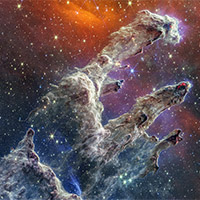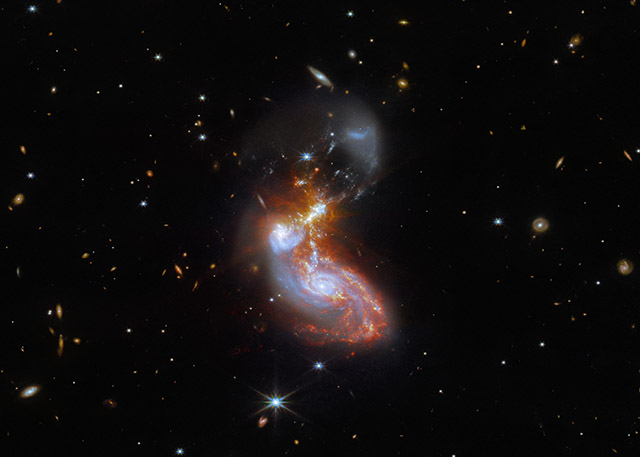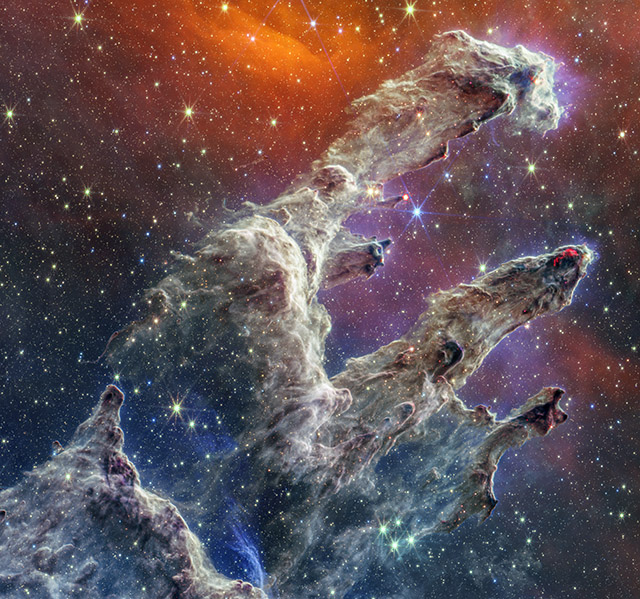James Webb Space Telescope images show merging galaxies and a new look at the Pillars of Creation
posted Thursday, December 1, 2022 at 12:30 PM EDT

NASA has unveiled a new image captured by the James Webb Space Telescope. The latest photo shows a pair of merging galaxies known as II ZW 96. The new photo was first previewed to Vice President Kamala Harris and French President Emmanuel Macron during a visit to NASA Headquarters in Washington on November 30. Harris and Macron also previewed a new composite image of the Pillars of Creation.
Looking first at the merging galaxies, II ZW 96 is about 500 million light-years from Earth. It's within the Delphinus constellation, which is near the celestial equator. Behind the merging galaxies, you can see a background rich with other distant galaxies.

To view a high-resolution version, click here.
Credit: ESA/Webb, NASA & CSA, L. Armus, A. Evans.
Since the two galaxies are merging, their shape is amorphous and chaotic. The bright cores of the galaxies are connected by "bright tendrils of star-forming regions," and the spiral arms of the lower galaxy are twisted by the "gravitational perturbation of the galaxy merger." The star-forming regions are a big reason Webb turned its sights on it. If you'd like to see how Webb's new image compares to a previous observation by Hubble, click here.
The second image seen by Harris and Macron is a new composite of the iconic Pillars of Creation. The composite was made using images from NIRCam and MIRI. The Webb team writes, "By combining images of the iconic Pillars of Creation from two cameras aboard NASA’s James Webb Space Telescope, the universe has been framed in its infrared glory. Webb’s near-infrared image was fused with its mid-infrared image, setting this star-forming region ablaze with new details."
Many stars are visible in the image thanks to the near-infrared imaging capabilities of NIRCam. MIRI's contribution shows the layers of orange dust throughout the image. The dust, especially the large pillars of it, is why the area creates so many stars – dust is a major ingredient for star birth. Some of the stars in the image are estimated to be only a few hundred thousand years old. They'll continue to form and grow for millions of years.

To view a high-resolution version, click here.
Credit: NASA, ESA, CSA and STScI with image processing by Joseph DePasquale (STScI), Alyssa Pagan (STScI) and Anton M. Koekemoer (STScI).
The Pillars of Creation are much closer to home than II ZW 96. The Pillars of Creation is a small region within the Eagle Nebula, just 6,500 light-years from Earth.